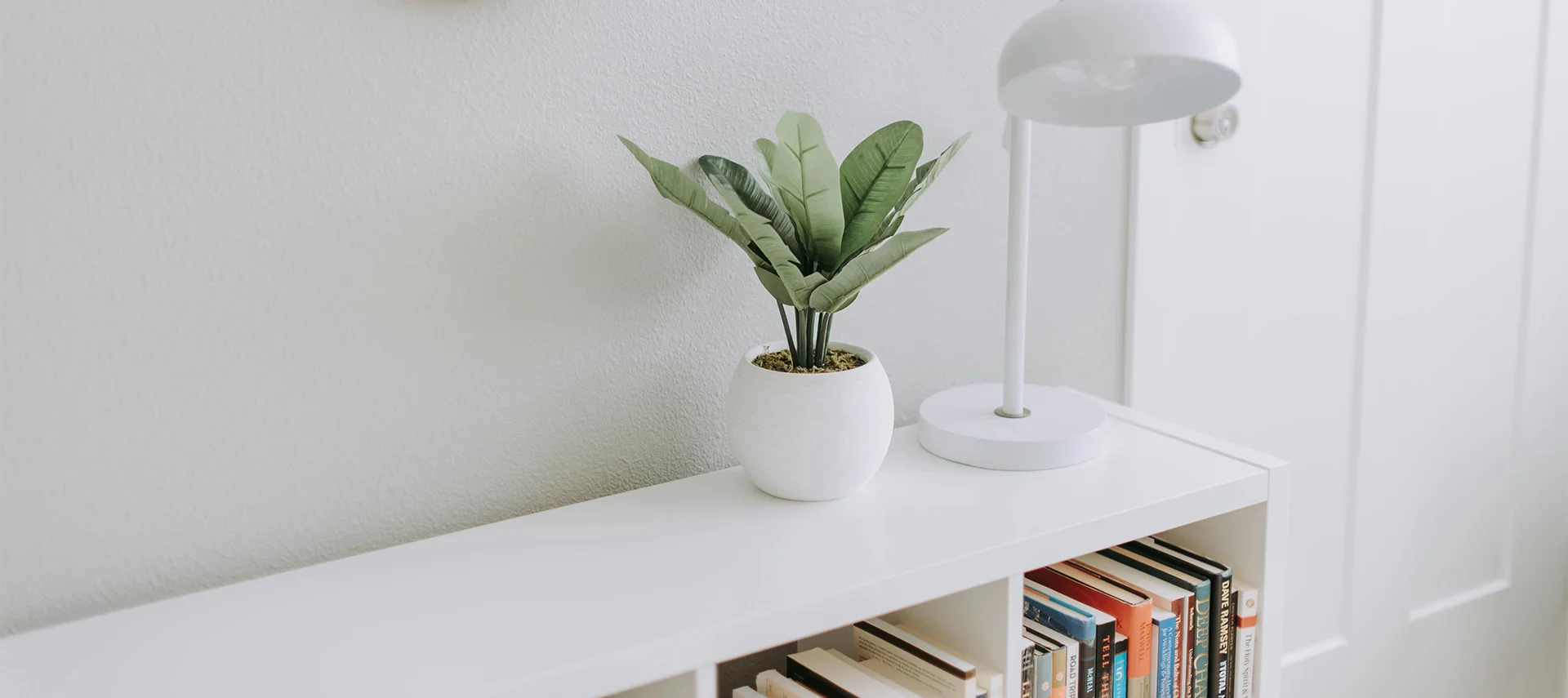Minimalism, especially in interior design, is often associated with bare, impersonal, or anonymous spaces. However, well-designed minimalism is anything but boring. It’s about removing the unnecessary to allow essential elements to shine with clarity and meaning. But how can you maintain a minimalist style while expressing your personality and taste? In this article, we’ll explore key strategies for personalizing a minimalist space, keeping balance, simplicity, and a unique touch.
1. The Secret is in Simplicity
Simplicity doesn’t mean getting rid of everything, but rather focusing on what truly matters. A well-designed minimalist space reflects personality through attention to detail and careful selection of decorative and functional elements. The goal is to strike the right balance between a reduced number of items and personal expression.
Personalizing with Color Accents
In minimalism, the color palette is generally composed of neutral tones like white, gray, beige, and black. However, it’s possible to personalize your space by introducing color accents that reflect your tastes and style. Adding a single colorful item, like a cushion, lamp, or painting, can transform the entire room’s perception without disrupting the minimalist aesthetic. For example:
- Blue touches can evoke feelings of calm and serenity.
- Green accents through plants or natural decor can bring life and freshness.
Playing with Textures
In a minimalist space, where colors are often limited, textures become essential to add depth and visual interest. A wool rug, a rough linen sofa, a coarse cotton throw: these surface variations create a richer tactile and visual experience while maintaining aesthetic simplicity. You can combine smooth and rough surfaces to provide contrast and three-dimensionality without adding clutter.
2. Choosing the Right Furniture
Furniture defines the space in a minimalist environment, and it’s crucial to select pieces that are not only beautiful but also functional. In this style, every piece of furniture must serve a purpose, contributing to daily life’s comfort and practicality without overwhelming the environment.
Functionality First
Minimalism requires a careful selection of furniture, focusing on functionality. The pieces you choose should be practical but also aesthetically pleasing. The idea is to avoid the superfluous and opt for furniture that has a dual function or can be used in various ways. For example:
- Multifunctional tables: a coffee table that can also serve as a workspace.
- Beds with integrated storage for organization.
Furniture that combines aesthetics and function fits perfectly into a minimalist environment, saving space and maintaining order.
Natural Materials
Another crucial aspect is the choice of materials. Natural materials such as wood, glass, metal, and stone integrate perfectly with a minimalist style, offering a sense of authenticity. Untreated or raw wood furniture, for example, brings warmth and naturalness to the space, while glass and metal add a modern and clean touch.
Simple Shapes and Clean Lines
Geometric lines and simple shapes are key elements in minimalism. Avoid overly ornate furniture or elaborate shapes. Furniture with straight lines or soft curves keeps the environment tidy and balanced. The important thing is that every element is visually “light” and harmonious.
Visual Balance
Balance is essential in a minimalist environment. If you choose a large or impactful piece of furniture, like a dominant sofa or dining table, balance it with more discreet accessories. This prevents the space from feeling overcrowded or unbalanced.
3. Organizing Spaces Efficiently
Decluttering is the foundation of minimalism. Every item must serve a purpose, and spaces must be organized to promote order and clarity. However, organization shouldn’t sacrifice personality or warmth.
Smart Storage Solutions
In a minimalist space, the key is invisible organization. Hidden storage solutions, like drawers integrated into furniture or closed shelves, allow you to keep everything tidy without exposing too many items. If you opt for open shelves, display only a few decorative objects that represent your style, such as books or small sculptures.
Regular Organization
Maintaining a minimalist space requires constant evaluation. Every now and then, review the objects in your home and ask yourself: “Do I really need this?” or “Does this add something to my space?”. Developing a decluttering routine will help keep your home consistently organized.
Before and After: Transforming the Space
Visually showcasing a transformation from a cluttered, chaotic space to a minimalist one through “before and after” images can be extremely effective. These visual demonstrations help readers understand the tangible impact of minimalist solutions and how they can implement them in their own homes.
4. Adding Personal Touches
Although minimalism focuses on reducing objects, there’s always room to express individuality. A minimalist environment doesn’t have to be sterile but should reflect the values, tastes, and passions of those who live in it.
Art and Decorations
The key to adding decorations in a minimalist environment is to choose few but impactful pieces. You could opt for a single painting, sculpture, or photograph that aligns with the space’s theme and colors but adds personality and a unique touch. Remember, even a single object can become the focal point of the room, attracting attention without overwhelming the space.
Plants
Plants are an ideal decorative element for a minimalist space. Not only do they bring life and freshness, but plants, especially those with dark green leaves and structured shapes like the Fiddle Leaf Fig or the Snake Plant, add a natural and relaxing touch. Plants integrate well with minimalist aesthetics, and depending on their placement, can make the space feel more welcoming.
5. Choosing Colors
Color is one of the most powerful tools in interior design, and even in a minimalist style, it can be used to express personality. While neutral tones often dominate the color scheme, you can incorporate color accents strategically to add vibrancy.
Monochromy and Gradients
Using a monochromatic scale is an elegant way to maintain a cohesive minimalist environment. However, to avoid a flat look, play with different shades of the dominant color. For example, a room entirely in shades of gray can appear interesting and sophisticated if varied with light and dark tones, paired with fabrics of different textures.
Accent Colors
In a minimalist space, accent colors are used sparingly to create points of interest. A rug, an armchair, or a single painting in a vibrant hue like blue, green, or yellow can be enough to liven up the environment without breaking the overall harmony.
Conclusion
Minimalism should never be interpreted as synonymous with boredom or lack of expression. On the contrary, it offers the perfect canvas to express your personality through the essentials. With the right choice of furniture, colors, materials, and decorations, you can create a space that is not only tidy and functional but also subtly and tastefully reflects your uniqueness.




 No products in the cart.
No products in the cart. 